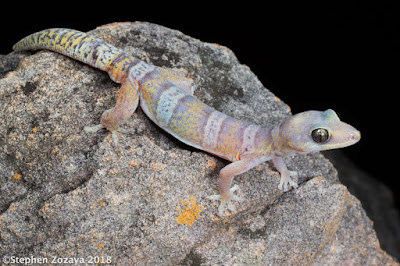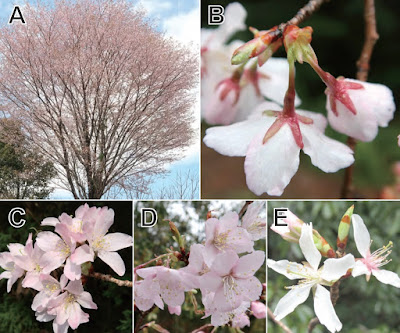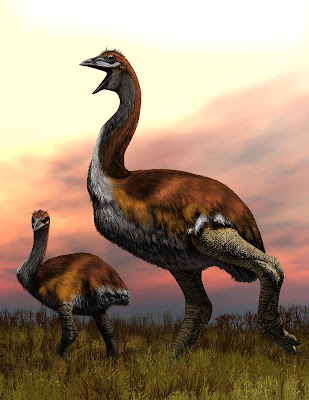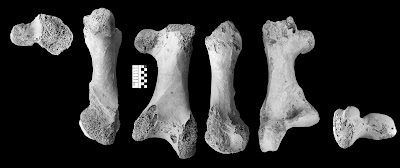[Most Recent Entries] [Calendar View]
Thursday, September 27th, 2018
| Time | Event | ||||||
| 10:05a | [Herpetology • 2018] Oedura argentea • A New Species of Velvet Gecko (Diplodactylidae: Oedura) from Sandstone Habitats of Inland north Queensland, Australia
Abstract We describe a new species of velvet gecko (Diplodactylidae: Oedura) from the sandstone ranges of central-north Queensland, Australia. Oedura argentea sp. nov. is a medium-sized (SVL 61–80 mm) gecko that is distinguished from its congeners by a combination of its relatively small size, a pattern of 5–6 dark-edged pale transverse bands from neck to pelvis, a silvery iris, a slender tail, a single cloacal spur, and in possessing 14–22 pre-cloacal pores in males. Oedura argentea sp. nov. is a sandstone specialist currently known only from the Gregory Range and nearby sandstone outcropping at Bulleringa National Park. Further surveys are required to determine the limits of distribution through this region. Oedura argentea sp. nov. is the fifth described species of Oedura in north-eastern Queensland. We also assess the name O. fracticolor De Vis, 1884 because it is an unresolved name pertaining to this general region. Based on colour-pattern and locality in the original description, we conclude that O. fracticolor is a senior synonym of O. castelnaui (Thominot, 1889); however, we propose that priority be overturned under Articles 23.9.1.1 and 23.9.1.2 of the ICZN (1999) and that the name O. fracticolor be regarded as nomen oblitum and O. castelnaui a nomen protectum. Keywords: Reptilia, Oedura argentea sp. nov., Oedura castelnaui, Oedura fracticolor
 Oedura argentea sp. nov. Silver-eyed velvet gecko Etymology. From the Latin adjective argenteus, meaning silver or silvery, in reference to the silvery iris of this species, which is unique among eastern Australian Oedura. The name is used here as an adjective in its feminine form.  
Ecology. Oedura argentea sp. nov. is restricted to sandstone outcrops and escarpments. Individuals are typically found at night foraging on sandstone cliff faces and pavements but have also been found at night on nearby vegetation, particularly small, thin trees. We have observed them emerging from narrow rock crevices at dusk Conrad J. Hoskin, Stephen M. Zozaya and Eric Vanderduys. 2018. A New Species of Velvet Gecko (Diplodactylidae: Oedura) from Sandstone Habitats of Inland north Queensland, Australia. Zootaxa. 4486(2); 101–124. DOI: 10.11646/zootaxa.4486.2.1 | ||||||
| 2:38p | [Botany • 2018] Cerasus kumanoensis (Rosaceae) • A New Species from the Southern Kii Peninsula, Japan A new species, Cerasus kumanoensis T. Katsuki (Rosaceae), sp. nov., is described from the southern Kii Peninsula, Japan. It is similar to C. jamasakura var. jamasakura and C. leveilleana because the corymbose inflorescences and extended peduncle are identical in these three taxa. However, C. kumanoensis is distinguished by several morphological and phenological characteristics, an earlier flowering period, narrowly ovate and smaller leaf blade (4–8 cm long, 1.8–3.6 cm wide) and glabrous petiole and pedicel. Key words: Cerasus kumanoensis, flowering cherry, flowering period, Japan, Kii Peninsula Toshio Katsuki. 2018. A New Species, Cerasus kumanoensis from the Southern Kii Peninsula, Japan. Acta Phytotax. Geobot. 69(2); 119-126. DOI: 10.18942/apg.201801 | ||||||
| 2:39p | [PaleoOrnithology • 2018] Vorombe gen. nov. • Unexpected Diversity within the Extinct Elephant Birds (Aves: Aepyornithidae) and A New Identity for the World's Largest Bird
Abstract Madagascar's now-extinct radiation of large-bodied ratites, the elephant birds (Aepyornithidae), has been subject to little modern research compared to the island's mammalian megafauna and other Late Quaternary giant birds. The family's convoluted and conflicting taxonomic history has hindered accurate interpretation of morphological diversity and has restricted modern research into their evolutionary history, biogeography and ecology. We present a new quantitative analysis of patterns of morphological diversity of aepyornithid skeletal elements, including material from all major global collections of aepyornithid skeletal remains, and constituting the first taxonomic reassessment of the family for over 50 years. Linear morphometric data collected from appendicular limb elements, and including nearly all type specimens, were examined using multivariate cluster analysis and the Bayesian information criterion, and with estimation of missing data using multiple imputation and expectation maximization algorithms. These analyses recover three distinct skeletal morphotypes within the Aepyornithidae. Two of these morphotypes are associated with the type specimens of the existing genera Mullerornis and Aepyornis, and represent small-bodied and medium-bodied aepyornithids, respectively. Aepyornis contains two distinct morphometric subgroups, which are identified as the largely allopatric species A. hildebrandti and A. maximus. The third morphotype, which has not previously been recognized as a distinct genus, is described as the novel taxon Vorombe titan. Vorombe represents the largest-bodied aepyornithid and is the world's largest bird, with a mean body mass of almost 650 kg. This new taxonomic framework for the Aepyornithidae provides an important new baseline for future studies of avian evolution and the Quaternary ecology of Madagascar. Systematic Palaeontology Order Struthioniformes Latham, 1790 Family Aepyornithidae Bonaparte, 1853 Genus Aepyornis Geoffroy Saint-Hilaire, 1851 Aepiornis Geoffroy Saint-Hilaire, 1851, p. 52 Epiornis Muller and Baldamus, 1851, p. 48 Epyornis Bonaparte, 1853, p. 139 Type species: Aepyornis maximus Geoffroy Saint-Hilaire, 1851 (by monotypy). Recognized species: Aepyornis maximus Geoffroy Saint-Hilaire, 1851; Aepyornis hildebrandti Burckhardt, 1893 ..... Genus Mullerornis Milne-Edwards and Grandidier, 1894 Flacourtia Andrews, 1895, p 23 Type species: Mullerornis betsilei Milne-Edwards and Grandidier, 1894; designated by Richmond. Recognized species: Mullerornis modestus (Milne-Edwards and Grandidier, 1869)
Genus Vorombe gen. nov. Etymology: From the Malagasy for ‘big bird’ (neuter). Type species: Aepyornis titan Andrews, 1894 Vorombe titan (Andrews, 1894) Aepyornis titan Andrews 1894, p. 18 Aepyornis ingens Milne-Edwards and Grandidier, 1894, p. 124
James P. Hansford and Samuel T. Turvey. 2018. Unexpected Diversity within the Extinct Elephant Birds (Aves: Aepyornithidae) and A New Identity for the World's Largest Bird. Royal Society Open Science. DOI: 10.1098/rsos.181295 After decades of conflicting evidence, scientists at @ZSLScience have put the ‘world’s largest bird’ debate to rest. The extinct Vorombe titan has taken the title at over 3 metres tall and weighing up to 800kg: zsl.org/science/news/zsl-names-world’s-l Team names world's largest ever bird—Vorombe titan phys.org/news/2018-09-team-world-largest-b |
| << Previous Day |
2018/09/27 [Calendar] |
Next Day >> |












